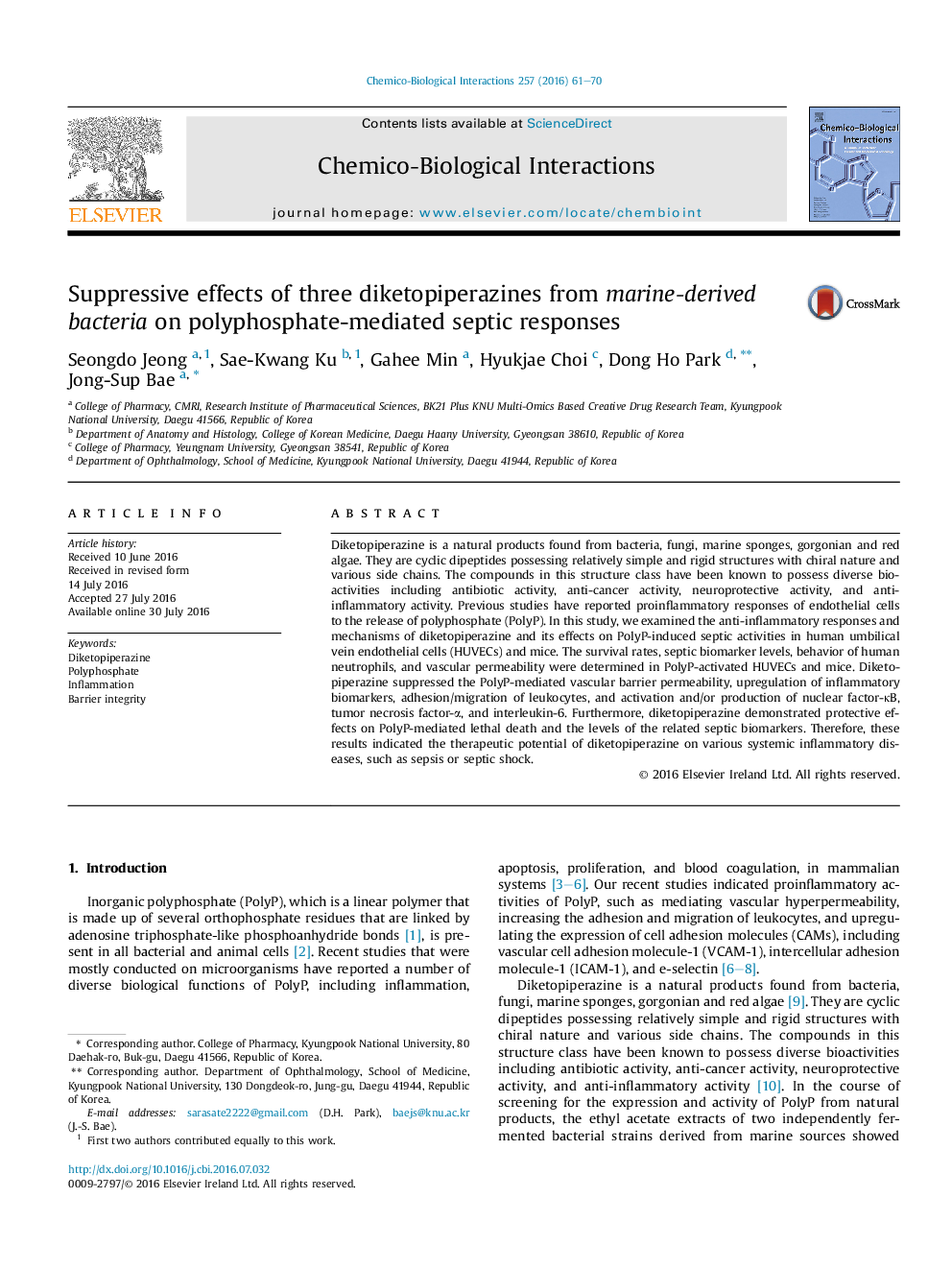| Article ID | Journal | Published Year | Pages | File Type |
|---|---|---|---|---|
| 2579800 | Chemico-Biological Interactions | 2016 | 10 Pages |
•Inorganic polyphosphate (polyP) is an important extracellular mediator of sepsis.•Compounds 1–3 inhibited polyP-mediated hyperpermeability.•Compounds 1–3 inhibited polyP-mediated septic response.•Compounds 1–3 reduced polyP-induced septic mortality.
Diketopiperazine is a natural products found from bacteria, fungi, marine sponges, gorgonian and red algae. They are cyclic dipeptides possessing relatively simple and rigid structures with chiral nature and various side chains. The compounds in this structure class have been known to possess diverse bioactivities including antibiotic activity, anti-cancer activity, neuroprotective activity, and anti-inflammatory activity. Previous studies have reported proinflammatory responses of endothelial cells to the release of polyphosphate (PolyP). In this study, we examined the anti-inflammatory responses and mechanisms of diketopiperazine and its effects on PolyP-induced septic activities in human umbilical vein endothelial cells (HUVECs) and mice. The survival rates, septic biomarker levels, behavior of human neutrophils, and vascular permeability were determined in PolyP-activated HUVECs and mice. Diketopiperazine suppressed the PolyP-mediated vascular barrier permeability, upregulation of inflammatory biomarkers, adhesion/migration of leukocytes, and activation and/or production of nuclear factor-κB, tumor necrosis factor-α, and interleukin-6. Furthermore, diketopiperazine demonstrated protective effects on PolyP-mediated lethal death and the levels of the related septic biomarkers. Therefore, these results indicated the therapeutic potential of diketopiperazine on various systemic inflammatory diseases, such as sepsis or septic shock.
Graphical abstractFigure optionsDownload full-size imageDownload as PowerPoint slide
